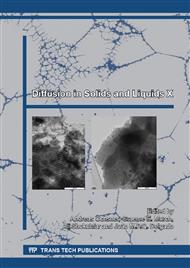p.226
p.232
p.237
p.244
p.249
p.255
p.262
p.266
p.272
Beta Irradiation Effect on Cu(In, Ga)Se2 Thin-Films
Abstract:
One of the most promising absorber materials for thin-film solar modules are polycrystalline chalcopyrite thin-film solar cells based on Cu (In, Ga)Se2 (CIGS). By having the direct band gap and high absorption coefficient, CIGS compounds have high solar to electricity conversion efficiency, reliability, and stability. The changes of physical properties of sol-gel derived CIGS thin-films were investigated after the beta irradiation. The effect of ionization radiation on the optical materials is promising in the radiation science and air and space science. The ionized radiation causes changes of physical and chemical properties by exciting the free carriers and forming electron-hole pairs. The irradiaton effect on the CIGS thin-films is evaluated by determining the optical band gap of the films exposed to the beta radiation source by using Sr-90 radioisotope. The variations in structural and optical properties were considered with respect to the absorbed dose level to investigate the characteristic properties of CIGS thin-films.
Info:
Periodical:
Pages:
249-254
Citation:
Online since:
July 2015
Authors:
Keywords:
Price:
Сopyright:
© 2015 Trans Tech Publications Ltd. All Rights Reserved
Share:
Citation:


